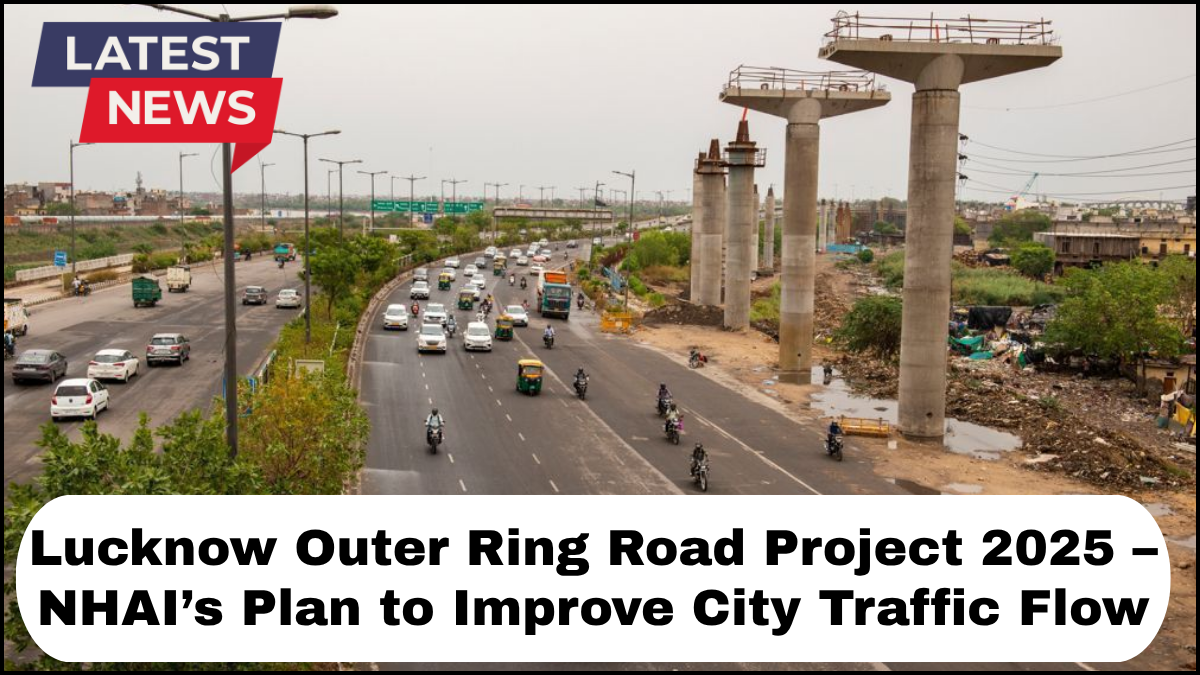The Lucknow Outer Ring Road Project is one of the most ambitious infrastructure ventures currently underway in Uttar Pradesh. Spearheaded by the National Highways Authority of India (NHAI), this project is designed to transform urban mobility across the state capital. Aimed at decongesting inner-city roads and creating seamless connectivity between key highways, the ring road will play a vital role in reducing travel time, fuel consumption, and vehicular pollution.

Scope and Significance
Planned to stretch over 104 kilometers, the Lucknow Outer Ring Road will loop around the city, linking major national and state highways including NH-24, NH-27, NH-30, and SH-40. This strategic route will allow long-distance traffic to bypass the city altogether, easing the burden on the urban road network.
The project is split into multiple phases, with land acquisition and construction actively underway. Once completed, the ring road will act as a lifeline for freight and logistics, while also supporting future urban expansion.
NHAI’s Role in Ring Road Development
The NHAI ring road development plan isn’t just about building new roads; it’s about reimagining infrastructure to serve economic and environmental goals. The Lucknow Outer Ring Road Project is being implemented under the Bharatmala Pariyojana, a centrally-sponsored highway development initiative.
NHAI has ensured that the ring road includes provisions for service roads, flyovers, underpasses, and intelligent traffic management systems. These enhancements are aimed at improving safety and efficiency while accommodating increased traffic volumes in the coming decades.
Economic and Environmental Impact
The project holds significant economic promise. With smoother traffic flow around the city, freight carriers can cut delays and reduce operational costs. Industries located in and around Lucknow will benefit from improved logistics, enhancing regional trade competitiveness.
On the environmental front, the reduction in traffic congestion is expected to lower carbon emissions and air pollutants. Moreover, by diverting heavy vehicles from the city center, the project will contribute to improved public health and road safety.
Key Features of the Project
- Length: Approximately 104 kilometers
- Lanes: 6-lane expressway with service roads
- Connectivity: NH-24 (Sitapur Road), NH-27 (Faizabad Road), NH-30 (Raebareli Road), SH-40 (Hardoi Road)
- Flyovers & Underpasses: Multiple grade separators for uninterrupted flow
- Technology Integration: CCTV surveillance, automated toll systems, emergency call boxes
Project Timeline and Current Status
As of 2025, major segments of the ring road are either completed or nearing completion. Land acquisition faced minor delays initially but was fast-tracked through coordination between NHAI and local authorities. The government aims to open the entire loop to traffic by the end of 2025.
Key sections such as the Bakshi Ka Talab to Sultanpur Road segment and Raebareli Road to Kanpur Road are already operational, providing early benefits in reduced congestion and travel time.
Future Outlook
The Lucknow Outer Ring Road Project is not a standalone solution but a foundational component of a broader regional mobility strategy. NHAI plans to complement the ring road with feeder routes, multimodal hubs, and last-mile connectivity enhancements. These integrations will amplify the road’s impact, making Lucknow a model city for smart and sustainable urban transport.
FAQs
Q1. What is the total length of the Lucknow Outer Ring Road?
A: The ring road spans approximately 104 kilometers around the city.
Q2. Who is responsible for the project?
A: The National Highways Authority of India (NHAI) is overseeing the development under the Bharatmala Pariyojana.
Q3. How will the ring road help reduce traffic congestion?
A: By redirecting through traffic and heavy vehicles away from the city core, the ring road will significantly ease inner-city traffic.
Q4. When will the Lucknow Outer Ring Road be fully operational?
A: The entire project is scheduled for completion by the end of 2025.
Q5. Will the ring road support future urban expansion?
A: Yes, it is designed to accommodate future growth, with provisions for urban connectivity and logistic corridors.
Q6. Are there environmental benefits?
A: Yes, reduced congestion and emissions are among the key environmental advantages of the project.
click here to learn more